TRACING THE PATH PODCAST
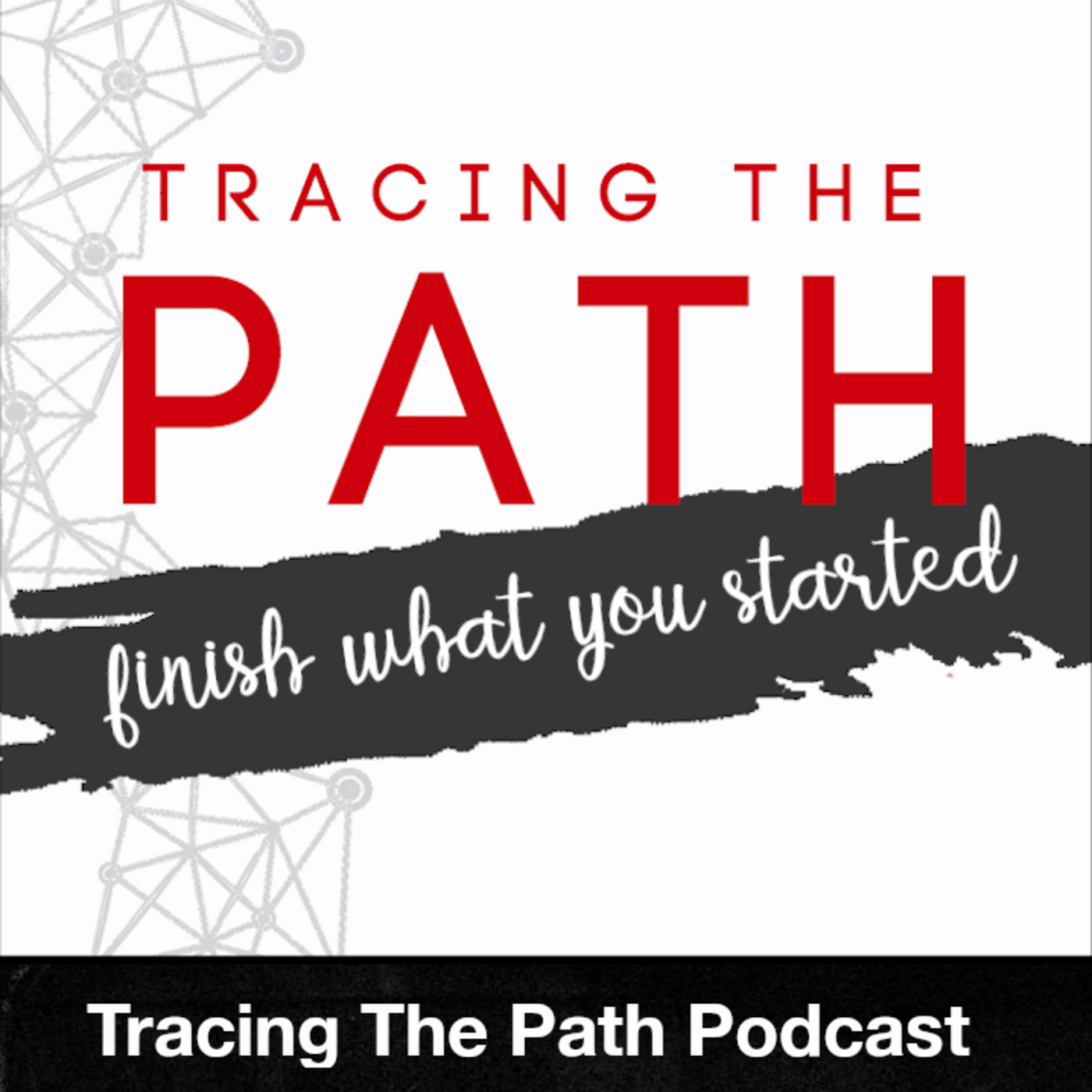
Finish What You Started
This podcast episode, “Origin of Tracing the Path,” serves as an autobiographical account of host Dan R Morris, revealing the diverse experiences and influences that shaped his passion for storytelling. From his childhood as an Air Force dependent, which exposed him to various locales and pop culture highlights like the Mount St. Helens eruption, to formative educational encounters such as Mr. Romer’s captivating reading of “Kon-Tiki” and the NPR Star Wars radio drama,
Morris traces the origins of his fascination with narrative stories later in life like, Paul Harvey’s “The Rest of the Story” and Charles Kuralt’s human-interest tales. Ultimately, a TEDx talk by Roger Cook and the poem “The Bridge Builder” inspired him to become a storyteller himself, leading to the creation of his podcast, “Tracing the Path,” which aims to reveal the hidden connections within familiar events and cultural touchstones.
“What if I told you, Wynton Marsalis, Warren Buffet and George Lucas were responsible for starting this podcast? Would you believe me?”
Because there are crazy connections everywhere.
The story you’re about to hear has never been told before. Welcome to the 33rd episode of Tracing the Path with Dan R Morris.

Audio Hour:
If you run an activity group, classroom or “audio book club”, click here for more information on using Tracing The Path.
- Dan R Morris was born in Cheyenne, Wyoming, and often tells people he’s “one of the eleven” to highlight the rarity of being born there. This suggests a transient early childhood, as his father’s Air Force career meant frequent moves across the country.
- In Washington, Dan experienced the ash plume from the eruption of Mount St. Helens on May 18, 1980. Hosing ash off the driveway became an indelible memory, marking it as a significant pop culture event in his young life.
- Mr. Romer, an Athabaskan (misstated as Alieut) Indian, made teaching his family and heritage a big part of the curriculum. He shared stories about the importance of the Raven, the meaning of totem poles, Pacific Northwest art, and even taught Athabaskan words.
- The “blanket tossing” ceremony was a celebration for the captain of a whaling crew. Walrus skins were sewn into a large circle, and friends and family would hold it like a trampoline to toss the whaling captain into the air.
- The Kon-Tiki expedition was Thor Heyerdahl’s three-month voyage on a balsa wood raft from Peru to Polynesia, undertaken to prove his theory of South American colonization of Polynesia. Mr. Romer’s chapter-by-chapter reading of Kon-Tiki riveted Dan and ignited his love of storytelling.
- John Houseman, with Frank Mankowitz’s suggestion, decided to adapt Star Wars into an NPR radio drama. George Lucas granted the rights for $1, and with BBC’s financial help, they produced a spectacular that became the most listened-to radio drama of all time.
- Beyond the musical connections, Dan learned that Casey Kasem was also the voice of Shaggy in the Scooby-Doo cartoons and Robin in the Batman cartoons. This additional connection deepened his appreciation for Kasem’s work and the interconnectedness of things.
- Paul Harvey’s “The Rest of the Story” masterfully crafted unbelievable narratives, only revealing the subject’s identity in the final seconds. This suspenseful format captivated Dan, making him eager to discover the unexpected ending of each tale.
- The “rock” that needed moving was Dan’s hesitation to put pen to paper and write his own stories, despite his passion. A TEDx talk by Roger Cook and reading the poem “The Bridge Builder” by William Dromgoole were the “straws that moved the needle.”
- Dan chose to tell the story of the Oregon Trail game for the first episode of “Tracing the Path.” He felt it defined his generation and wanted to infuse it with the “wow” factor of Paul Harvey and the cadence of Charles Kuralt, revealing unknown connections within well-known events.
Throughout the episodes, every tune is somehow related to the topic. In the Twinkies episode, for instance, the discussion of the Brooklyn Tip-Tops Baseball team concludes with “Take Me Out To the Ballgame”.
How many do you recognize? And harder, how many can you name?
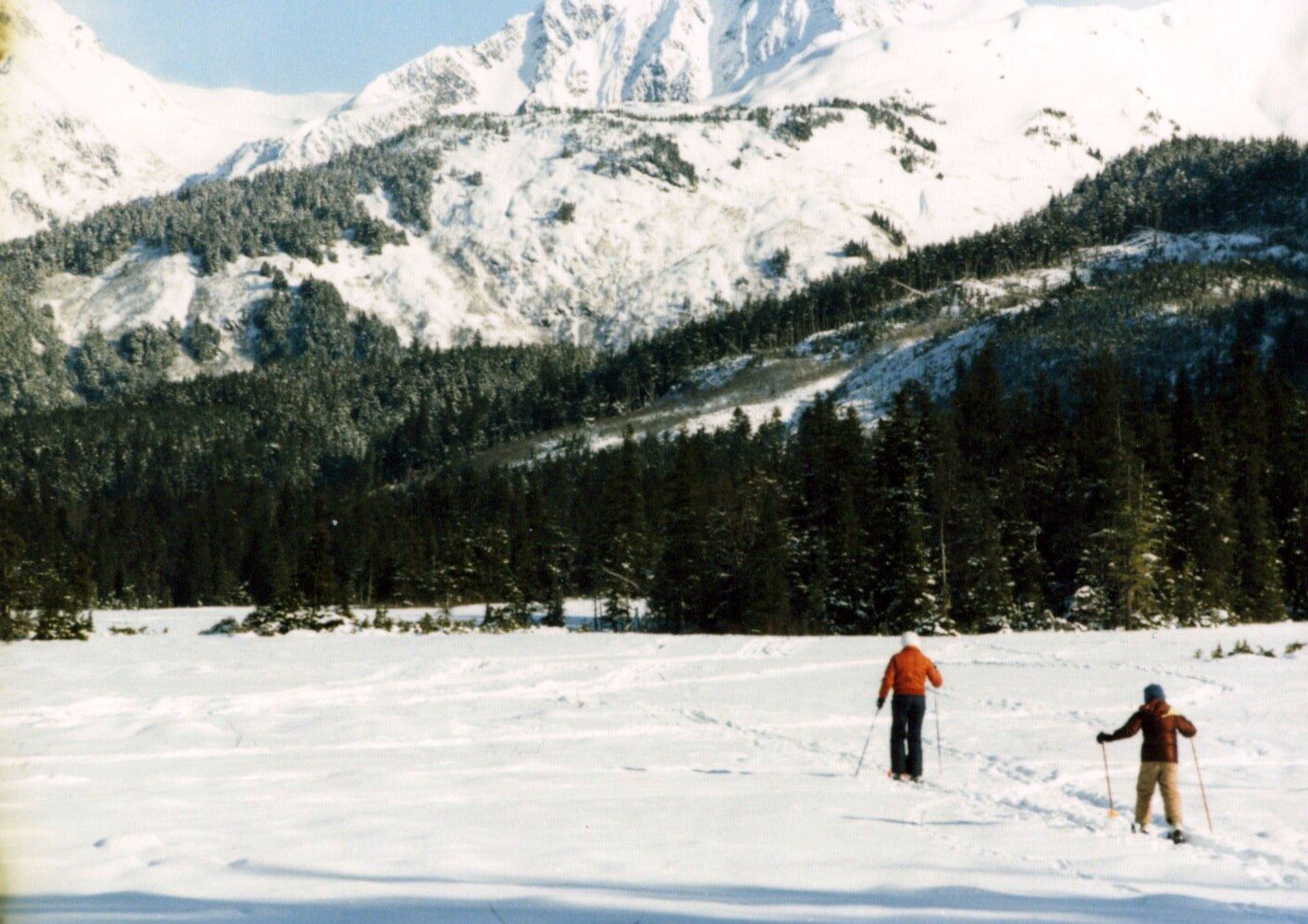
Finish What You Started
He was born in Cheyenne, Wyoming. And since you rarely, if ever, come across someone who was born in Wyoming, he iss fond of telling people, “Yes, I was born in Wyoming. I’m one of the eleven.”
But little Danny didn’t live in Cheyenne very long. His father was in the U.S. Air Force, which meant he wasn’t anywhere for very long. In fact, the first three years of his life were spent in Wyoming, Ohio, Florida, and Texas, with his father being away in Greece for one of those years.
But that would be the only time his father was away.
After that, the family mission was to see and do as many cool things as they could in each place before moving to the next. And since moving often didn’t leave a lot of time for vacations, they’d make sure to see the pop culture highlights first.
In Texas, that meant visiting the Hall of Horns, San Antonio’s Riverwalk and the Alamo before heading north to the next state of Washington. But on the way they’d be sure to visit the Grand Canyon and the Grand Cooley Dam. Danny would spend first, second, and third grades in Spokane, in a house not far from the school, and in an unfortunate accident of timing, they ended up living in a house that was built for a military general, not a second lieutenant.
Living on Air Force Bases, Danny and the family went to the air show every year. One year, they really went to see the Lockheed Martin SR-71 Blackbird, the fastest plane in the world. The SR-71 was so fast it could outpace any missile that tried to shoot it down, and it could fly 85,000 feet above the earth.
On that day, May 18, 1980, as Danny was climbing the ladder to see the cockpit, a gasp came from the crowd, and everyone looked to the sky. The darkest cloud imaginable was quickly approaching, but it wasn’t a storm cloud. The cloud would be an ash plume from the eruption of Mount St. Helens, another event of popular culture that would color Danny’s life.
Hosing ash off the driveway would be a memory indeliblyy left in his mind. Washington would be a short stop in Danny’s life, Mount St. Helens, the Seattle Space Needle, learning Italian in third grade, and having a best friend that didn’t speak English, would be his lasting memories.
Alaska would be their next destination. Being the closest state to Russia during the height of the Cold War, Elmendorf Air Force Base became an important location. Both President Reagan and then President Bush would come there to speak, and Danny was lucky to have been pulled out of school by his father to see the latter.
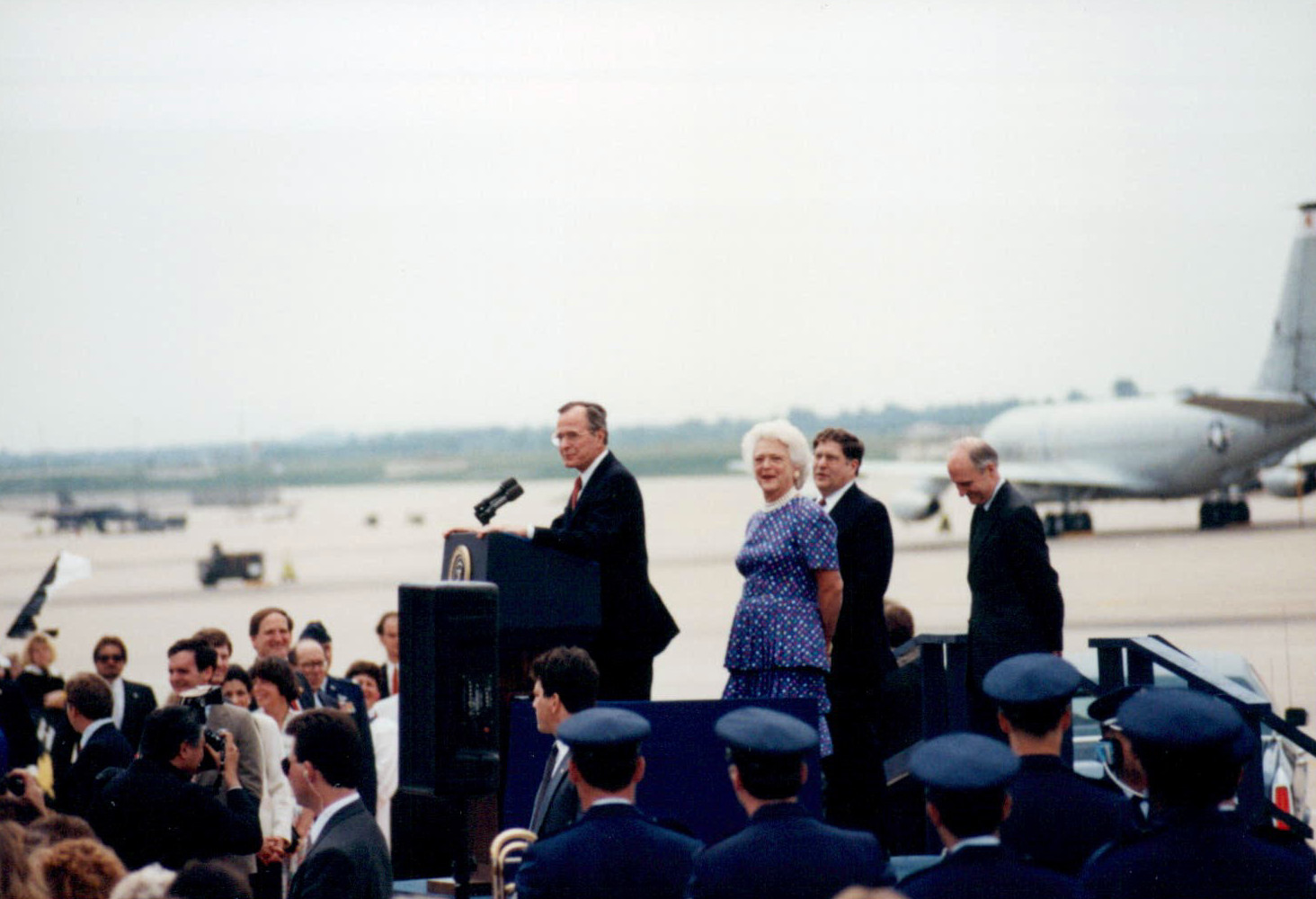
The Stories That Piqued His Interest
His teacher at Mt. Spurr Elementary was Mr. Romer. Mr. Romer was an Alieut Indian. When he smiled his face would get wrinkly and his eyes would disappear into the lines, making his smile pop out, raising the spirits of everyone around. For his parents, an Alieut teacher was probably very intriguing, most likely creating many questions and curiosities.
But children roll with a tide unlike any other stage of life, having an Alieut Indian as a teacher just seemed normal to Danny. But with that, go with the flow attitude of youth that also comes with a lack of wonder and curiosity. Mr. Romer knew that the children probably weren’t going to ask much about his family heritage, and so he made teaching it a big part of the curriculum.
He shared many stories from his culture, like the importance of the Raven, the meaning of totem poles and the Pacific Northwest art. He taught the kids’ Alieut words like “blook dak, na nuke, and nalook a tak-dook,” which meant beaver, polar bear, and blanket tossing. Mr. Romer even had a group from his village come to the school to do a blanket tossing exhibition, which was a ceremony to celebrate the captain of a whaling crew, where they sewed together walrus skins into a big circle, and then a large circle of friends and family would hold it like a trampoline, for the whaling captain to be tossed into the air.
Mr. Romer had a shy sense of humor as well. Although it did come out on Fridays when he grabbed a book to read to the class, he would always pick George and Martha, which were books written for four-year-olds, to read to this fifth grade class, and then he read it aloud as if it was serious literature. James Marshall, the author of George and Martha books, was influenced by his good friend Maurice Sendac, who wrote Where The Wild Things Are, for that same group of four-year-olds. But Mr. Romer did something else for Danny.
He showed Danny what it meant to be on the edge of your seat. At some point during the year he introduced the class to the book, “Kon-Tiki” by Thor Hyerdahl. He’d read a chapter at a time aloud in his loud Indian accent, and whether it was the tone or pace of the story, Danny was riveted.
Thor Hyerdall had been a Norwegian explorer who had big dreams. In 1937 he had convinced his wife to leave Norway to go live on one of the islands in Polynesia, Fatuhiva, 2,000 miles south of Hawaii in the middle of the Pacific Ocean. It was there he noticed the ancient stone heads and pyramids resembled ones he’d studied in Peru and came to the conclusion that Polynesians must have been colonized by people from South America.
He detailed the findings in scientific journals, but the scientific community rebuked him and said there was no way that would be possible. So Thor hired all, sent out, to prove them wrong. He decided he’d go to Peru and he’d build a balsa wood boat with only materials they had hundreds of years ago, and then he’d follow the tides all the way to Polynesia. And that story, that true story of the three-month voyage of the boat, Kon-Tiki, which Mr. Romer read one chapter at a time, is what kept Danny riveted and began his love of storytelling.
Mr. Romer left after that school year, leaving Danny only with the lessons and the memories.
The next year, however, his love of storytelling would take another leap. One of his teachers, Mr. Hearin, would introduce him to George Lucas in a way most never would have experienced.
The Star Wars Radio Drama
Star Wars was already a major part of life for the fourth and fifth graders of America, especially in 1984, a year after Star Wars number 3, Return of the Jedi had been released. Action figures toys, bed spreads, lunch boxes, and Halloween costumes. Star Wars was a major industry.
And because of movies like Star Wars and TV shows and VCRs, people weren’t listening to the radio as much. In fact, radio dramas were in a steep decline. That was tough to swallow for John Houseman.
42 years prior, John Houseman had produced the most famous radio drama of all time. War of the Worlds by Orson Wells. In 1976, he had founded the Drama Division at Juilliard. And in 1979 had been inducted into the American Theatre Hall fame.
In 1980, he found himself temporarily in charge of the Performing Arts College at USC, and wanted to do something big on the radio again. His friend Herman Mankowitz, who’d written Citizen Kane with Orson Wells. John Houseman brought in his son Frank to get his thoughts on doing a major radio drama, and Frank suggested they do the space opera Star Wars.
George Lucas and alumnus of USC immediately granted to USC the rights to the music the script and the sound effects, for the grand prize of $1. But that still left Houseman with an approximate $200,000 bill to do it right. Frank contacted the BBC who agreed to help financially, and that got John Madden in as the director.
John Madden wasn’t a huge name at that point, but eight years later he would win best picture for Shakespeare In Love. John secured Mark Hamill, Billy D. Williams, Anthony Daniels, and John Lithgow, among others, to produce this radio spectacular. They were about to turn George Lucas’ original story into an NPR radio superstar. And when it aired in 1980, it became the most listened-to radio drama of all time.
In here, four years later, Mr. Hearin had the entire series on cassette tape for the class to listen to. For Danny, it was the first time he would experience an audiobook as if a full movie was playing in his head. And since it was George Lucas’ original story, it contained scenes and moments totally cut from the movie. Danny couldn’t wait for that moment to begin every day.
Alaska was formative for Danny. School made him fell in love with storytelling, and Alaska had captured his family’s attention. His family would take all kinds of trips to see the Alaska pipeline, to see the North Pole Santa and Fairbanks, to visit Earthquake Park in Cook Inlet, to see Mount McKinley, the tallest mountain in North America, to visit Portage Glacier.
And Danny got to see Libby Riddles become the first female winner of the thousand mile Iditarod Sled Dog Race. And he got to see moose, go hot air ballooning and even land on a lake in a float plane in the mountains.
But like Star Wars and Kon-Tiki, the Alaska chapter of his life would come to an end in 1986. And his family would move all the way across the country to Dover, New Hampshire.
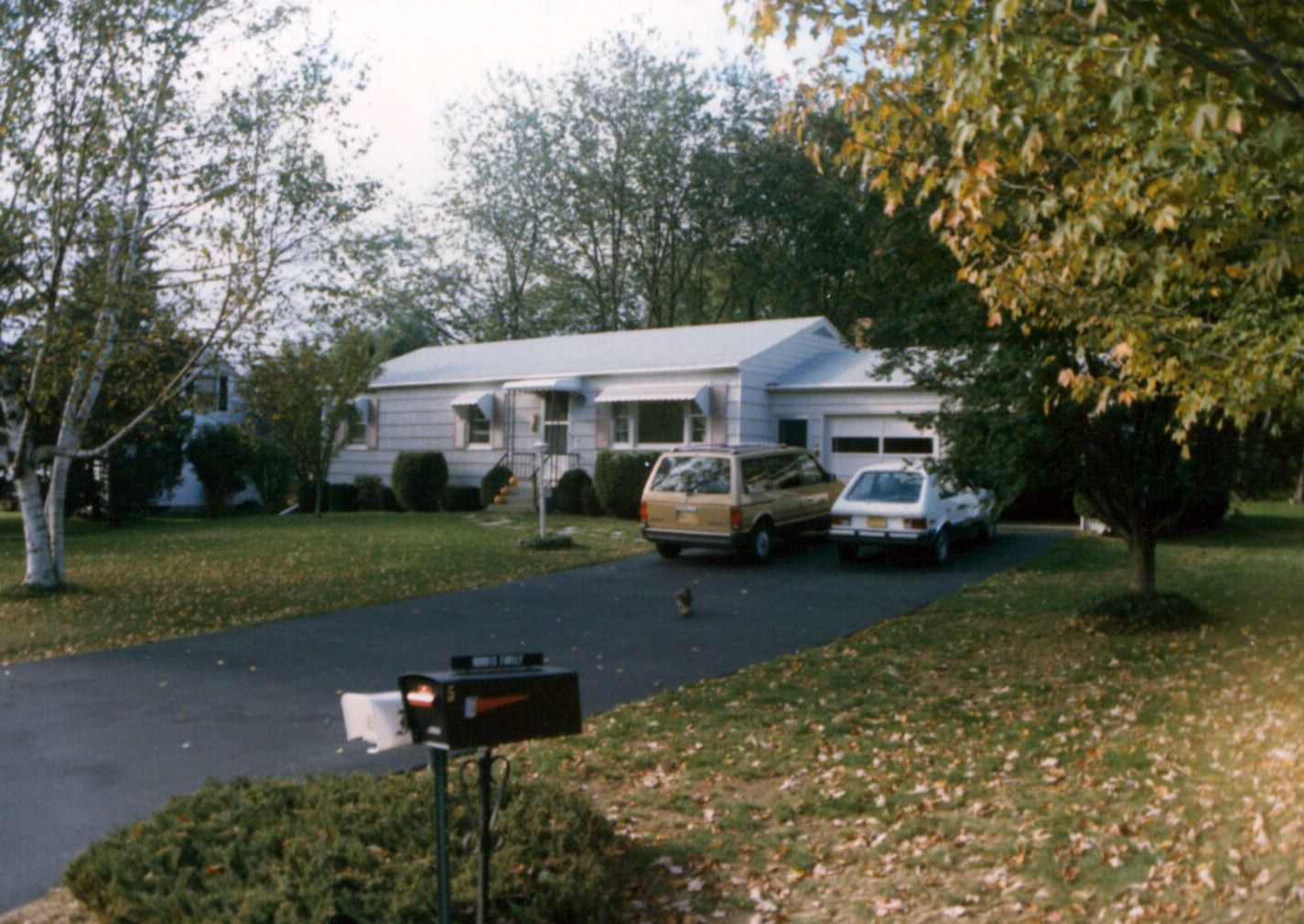
Dover, New Hampshire
New Hampshire would bring its own challenges, as Danny would be the new kid again. But this time, in a tight-knit community. He shed many tears in New Hampshire, finding out that making friends wasn’t always as easy as it seemed to be, which meant at the beginning, playing a lot of basketball in the front driveway, and listening to music on the clock radio.
While he loved listening to music, he really loved listening to Casey Kasim’s “America’s Top 40” even more. Casey Kaseim was a disc jockey who had began a top 40 radio show in 1970. Each week he’d played the top 40 songs as listed in the Billboard Top 100 charts, and he’d had a story or some biographical information to each song before it played.
For Danny, the stories opened up a world of connections in history he’d never existed. Two stories made him fall in love with knowing the connections between things. The first was the story of Broken Wings by the group Mr. Mister. Broken Wings was on the charts in 1985 and 1986. In introducing the song, Casey shared that Mr. Mister wrote the entire song in 20 minutes, as it almost wrote itself.
But more importantly he shared that it was inspired by the Lebanese author Khalil Gibran’s book, The Broken Wings, which was the same book that inspired Paul McCartney and John Lennon to write Blackbird.
And the other amazing story came from the Michael Jackson era. Michael loved writing his music and working with Quincy Jones to get it just right, but he still needed a band by the music. And a band that happened to be working a lot on the studios at the time was the band Toto, famous for the song Africa. So the next time you’re listening to any of the songs on Michael Jackson’s Thurl album, know that you’re hearing Michael Jackson voice, and the band Toto playing the music.
Those stories created in Danny a love of understanding the connections between things.
Even learning Casey Kasem was also the voice of Shaggy in the Scooby-Doo cartoons, and Robin in the Batman cartoons. It was fantastic. Unlike Alaska, where you can drive four hours in any direction and still be in Alaska, New Hampshire provided ample opportunity to see some of America’s greatest sights like Plymouth Rock and Boston’s Fanniuel Hall were only a short drive away.
In one year, they got to see John Williams’ final performance with the Boston Pops at the Fourth of July celebration. They also visited Kennebunkport, Maine and saw President Bush’s vacation home. They went to a Boston Red Sox game, followed Paul Revere’s trail, and watched the St. Patrick’s Tea get dumped into Boston Harbor.
It was in New Hampshire that Dan dropped the name Danny. He attended his first concert. It while on vacation at the Mount Washington Resort in the White Mountains. Jazz wasn’t Dan’s favorite kind of music, but he didn’t want to pass up the opportunity to see someone famous like “Wynton Marsalis.”
He did enjoy the stories “Winton would tell” about the songs in the band, and especially enjoyed learning about Marcus Roberts, “Winton Marsalis’s pianist at the time.” who was blind, learned piano from himself. But every place had a beginning and an end. And Nebraska, not New Hampshire, would be his future high school home.
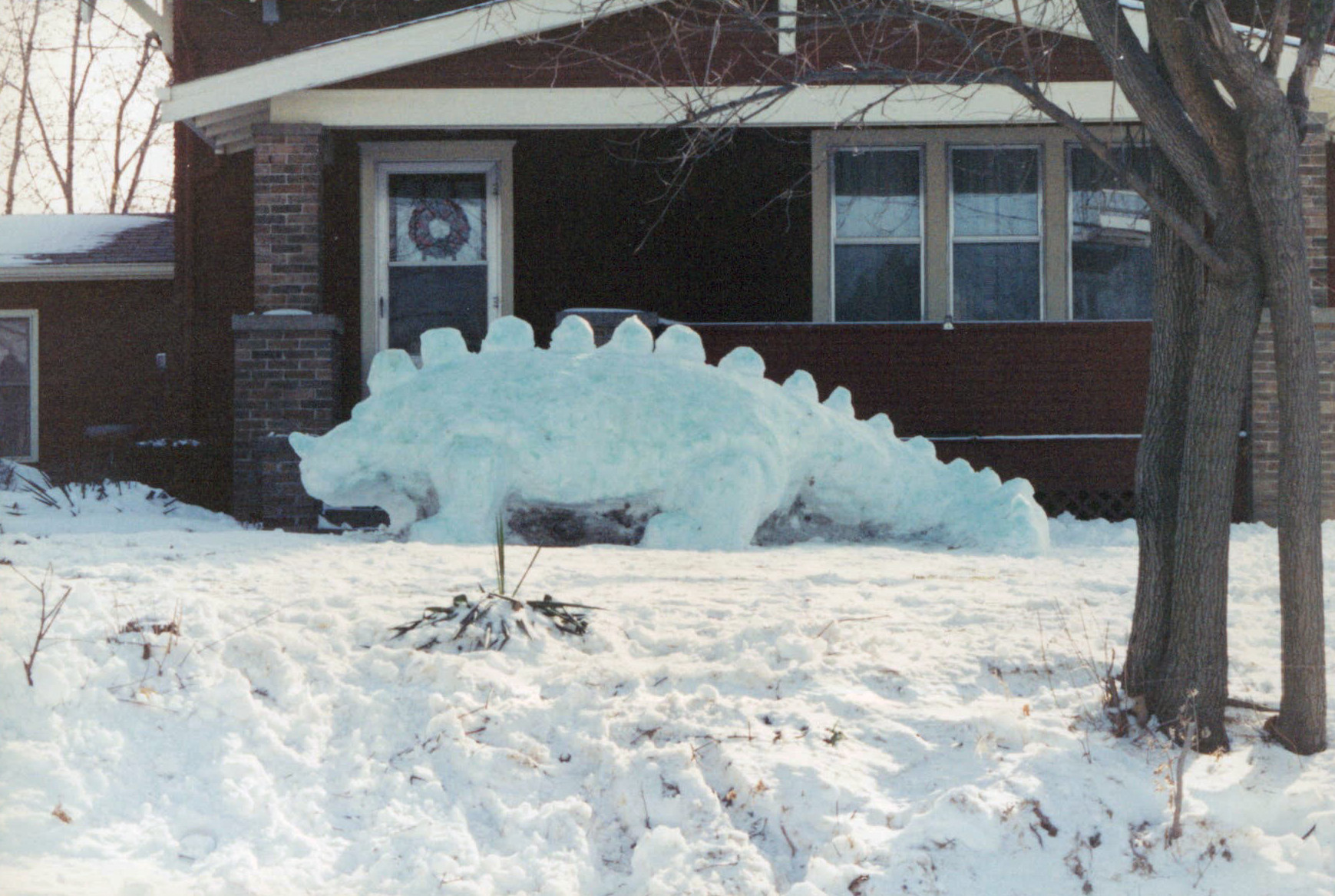
Moving to Nebraska
In Nebraska, Dan had begun to drive and stumbled upon another storyteller that mesmerized him, Paul Harvey. Paul Harvey had been on the radio since 1933 and had worked as a sportscaster and independent journalist and newsman in Oklahoma, Hawaii, Montana, and Chicago.
Paul Harvey had carved out a little niche for himself in the radio world. He had two short shows that radio stations all over America had syndicated. The first was Paul Harvey News, and was exactly what it sounds like. Except it was the news Paul Harvey handpicked to be in his report.
It wasn’t about car crashes on the I-10 or recent home break-ins in the Belmont neighborhood area. Paul found the most fascinating news pieces. Sometimes they involved the politician or an actor, but all were universally interesting.
His second show was called “The Rest of the Story” and was actually written by Paul’s son. There, he regaled unbelievable stories, only sharing with you who the story was about in the final seconds. Each one was masterfully crafted to have you dying to find out the ending.
Dan loved those stories so much, it didn’t matter how late he was for an appointment. He didn’t turn the car off until after Paul Harvey’s closing line. And now you know the rest of the story. And unfortunately, since Paul Harvey’s shows were so short, the moment he said that line, it was back to music.
For Dan, music was fun on short car trips, but road trips of any length required an audio book. A book on tape or a book on CD that you could rent or borrow from the library. John Grisham, Philip Caputo, Dan Brown, Ken Follett, Sebastian Junger. His entire family would listen to them on road trips. And other than the narrator coming out of the speakers, the car would be silent, all ears paying attention, until it was time to eject the tape or CD and slide in the next.
One book they listened to, in particular, fascinated Dan the most. It was Charles Kuralt’s America. Charles Kuralt was a storyteller on Sunday mornings, on the CBS Sunday morning program. In prior to that, he’d had a segment called “On the Road,” during the CBS Evening News with Walter Cronkite.
He was the master of telling human interest stories. Each of his tales would leave you busting with pride or joy or patriotism or love, and his speaking cadence was hypnotic. While John Grisham wrote thrillers that sounded like movies, Charles Kuralt’s book was tales of ordinary and extraordinary people, not sexy or fast paced, but it left and riveted the same way John Grisham did.
Nonfiction stories can be amazing too, shouldn’t have been a revelation for a Casey Kasim fan. But the context of them being an audiobook shifted Dan’s perception. In high school, his English teachers introduced Dan to some of the most amazing writers. Willa Cather’s “My Antonia”, Thornton Wilder’s “Bridge on the San Luis Ray”, Steinbeck’s “The Pearl”, and Stephen Crane’s “Red Badge of Courage”.
Any thought Dan might have of becoming an author or writing stories would be put on hold, however. College and work and fun relegated those thoughts to the back of his mind. But the content he’d one day turn into stories was the life he was living. For a while he was a manager at the stadium where the College World Series was held. And one of the owners and regular customers was Warren Buffett, to whom Dan got to chat with and hear stories from.
But Dan was also fascinated by the guests who would accompany Mr. Buffett. It was almost a game of Six Degrees of Kevin Bacon. How did Mr. Buffett know Deborah Winger, Kevin Costner, Chip Davis? So many connections most people don’t know out were just fascinating.
Sometimes it takes a lot to move a rock, and for Dan they took a speech and a poem before he put pen to paper to write his own stories.
I’d lIke To Teach The World To Sing
One day, Dan would find himself in the James K. Polk Auditorium of the Performing Arts Center in Nashville, Tennessee, attending a TEDx talk event, not knowing it would be the straw that moved the needle. After a series of great talks, Roger Cook took the stage with guitar and hand. And he began to tell the story of a song he wrote called “I’d like to teach the world to sing.” And how it became a major hit for Coca-Cola. It was as if the world faded away in the most glorious moment was unfolding on stage. It was everything Dan loved in one story, popular culture, unknown connections, and the person behind them all rolled into one.
At the time, Dan had little kids of his own, and he wanted to share these things with them, but he knew they were too young still. He wanted to share with them the stories of Paul Harvey and the stories of Charles Kuralt, and take them to things like TEDx where they could hear people like Roger Cook tell unbelievable tales about their lives.
And while he was waiting for them to grow up as he thought he probably needed to do, he came across a poem called The Bridge Builder by William Dromgoole. The poem was about an old man on a journey who came across a bridge that was in disrepair. And though he could cross the bridge, he stopped to fix it. And when he got to the other side, another traveler asked him, “Why did you fix this bridge when you’ve already crossed it?” And to quote the last stanza of the poem.
” The builder lifted his old grey head.
“Good friend, in the path I have come,” he said,
“they’re followed after me today, a youth whose feet must pass this way.
This chasm that has been as naught to me, to that fair-haired youth may at pitfall be.
He too must cross in the twilight dim. Good friend, I am building this bridge for him.”
And reading that poem, Dan realized he didn’t need to wait for his kids to be older, to hear stories someone else chose. He could be the storyteller. And he wanted to start by telling the story that defined his generation.
He wanted to tell the story of the Oregon Trail game. Back in Mr. Romers’ class, halfway through the year, a computer was installed at the back of the classroom. It was supposed to be for reading and math assignments, but quickly, the only thing anyone wanted to do was play the Oregon Trail.
He wanted to tell that story, but he’d read plenty of books that didn’t make you say “wow” and he wanted the wow of Paul Harvey and the cadence of Charles Kuralt. He wanted every story to be filled with people, places, and events everyone knows about, but then filled the episodes with the stories and connections they didn’t.
And so on August 6th, 2019, he recorded that story. The Story of Apple computers in the Oregon Journal game, thereby defining his generation, and he called it “Tracing The Path.” For a little Danny, who became Dan, and then Dan R Morris, is me.
And you’ve been listening to the origin story of this podcast. And now you know the rest of my story.
CUTTING ROOM FLOOR
To hear all the stories that hit the cutting room floor, you have to listen to the episode.
ABOUT THE SHOW
Let us tell you the story of the 20th Century, by tracing each event back to the original decisions that shaped it. You’ll quickly find out that everybody and everything is connected. If you thought you understood the 20th Century, you’re in for a treat.
Tracing the Path is inspired by storytellers like Paul Harvey, Charles Kuralt, and Andy Rooney.
INTERCONNECTED EPISODES
 |
The America of Tarzan and Buck vs Bell When Tarzan and the Supreme Court defined the popular culture |
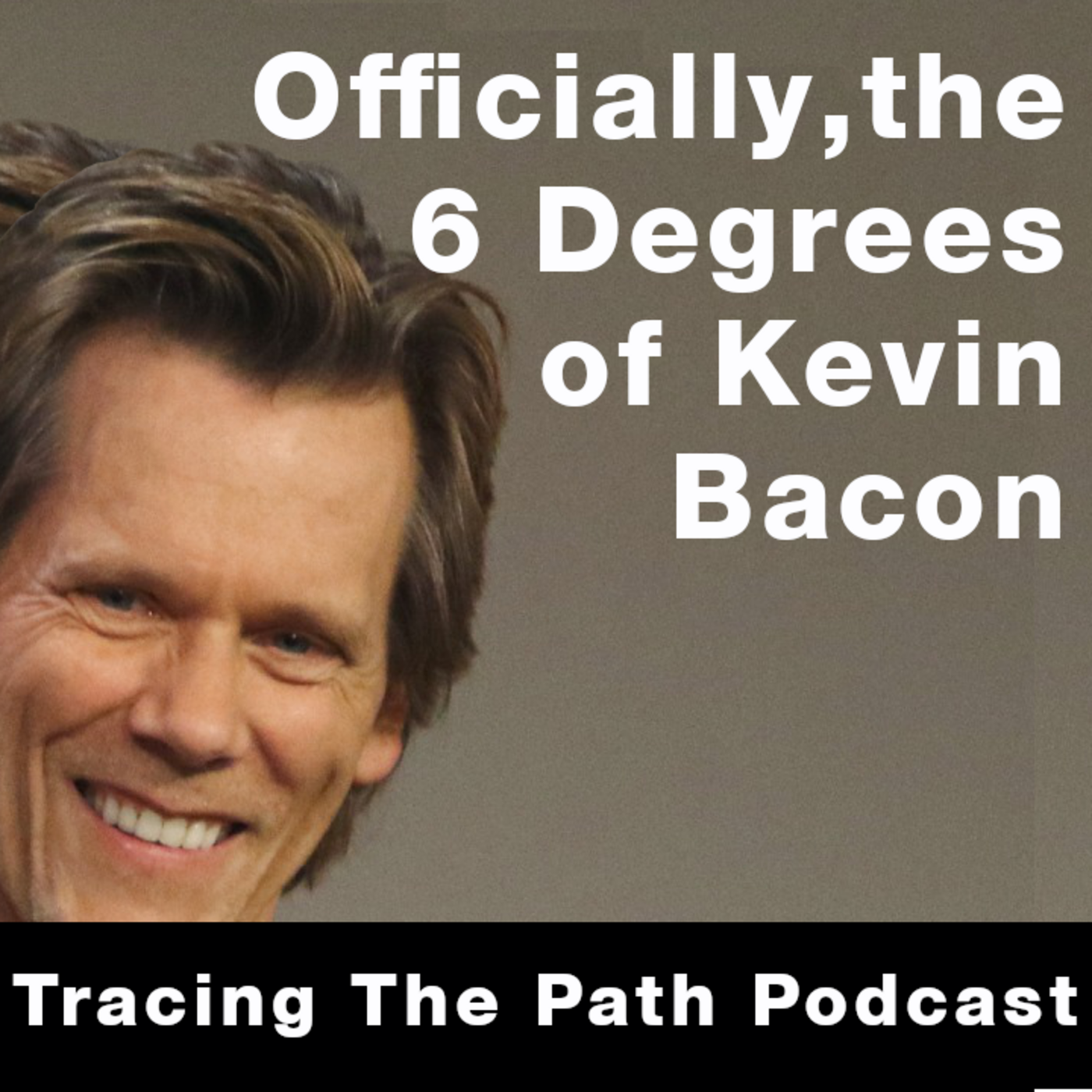 |
The Official Six Degrees of Kevin Bacon It just so happens Tracing the Path is friends with the creator of the Six Degrees, and he’s only 1 degree away. |
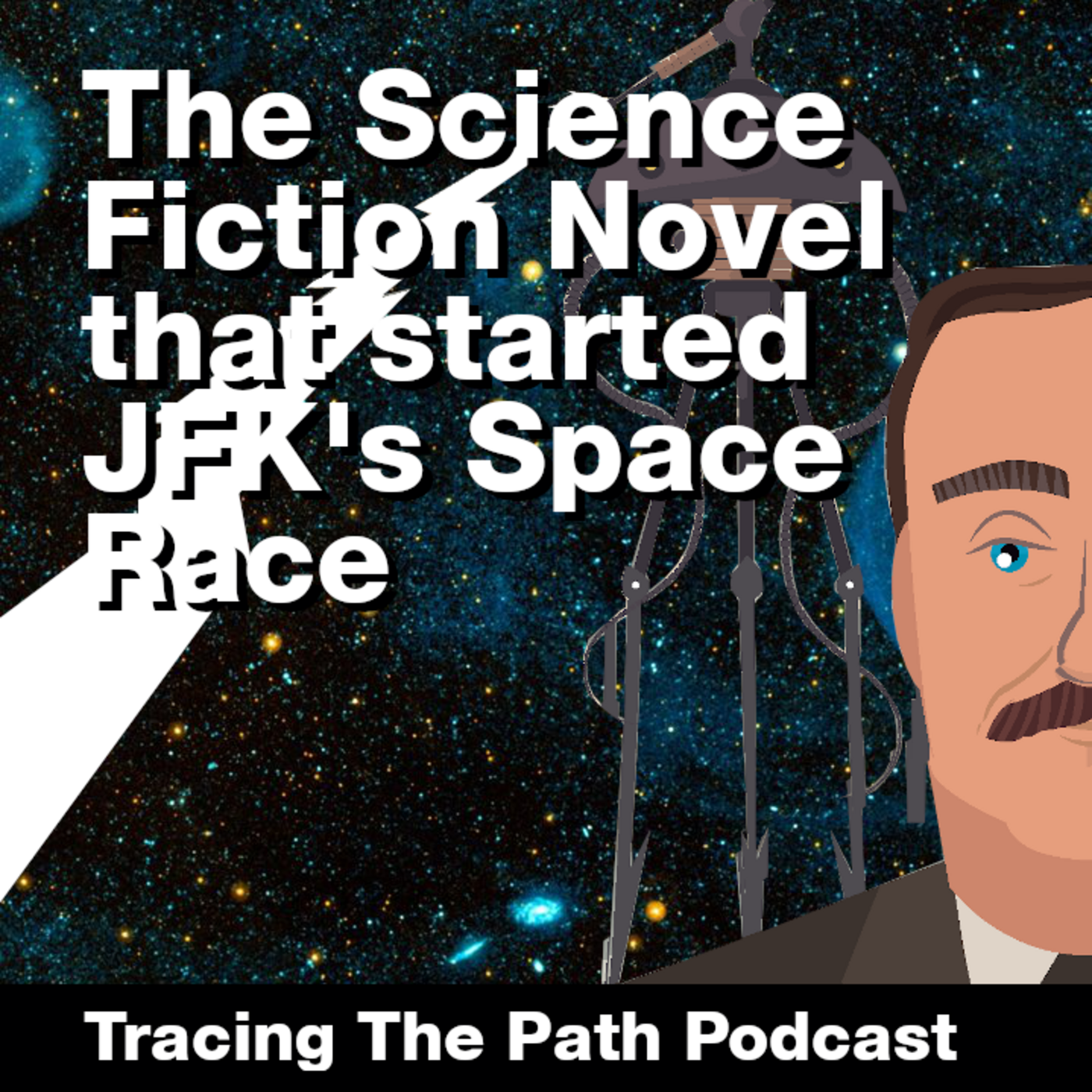 |
Who Started the Outer Space Race? Elon Musk isn’t the first person to have his eyes set on Mars. |
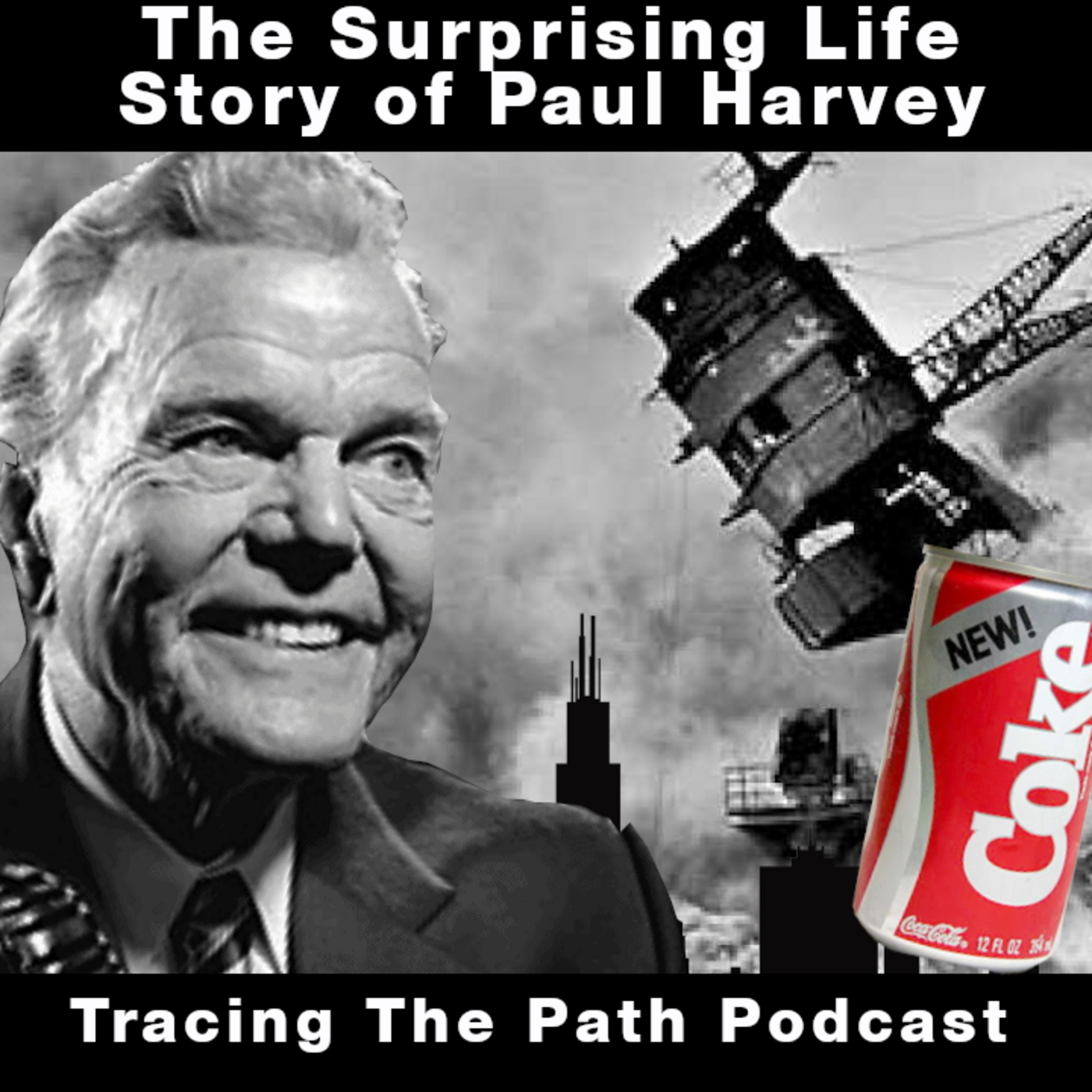 |
The Surprising Life Story of Paul Harvey Pearl Harbor, Pilot, Chicago and Coca-Cola; The World’s Most Prolific Radio Man |
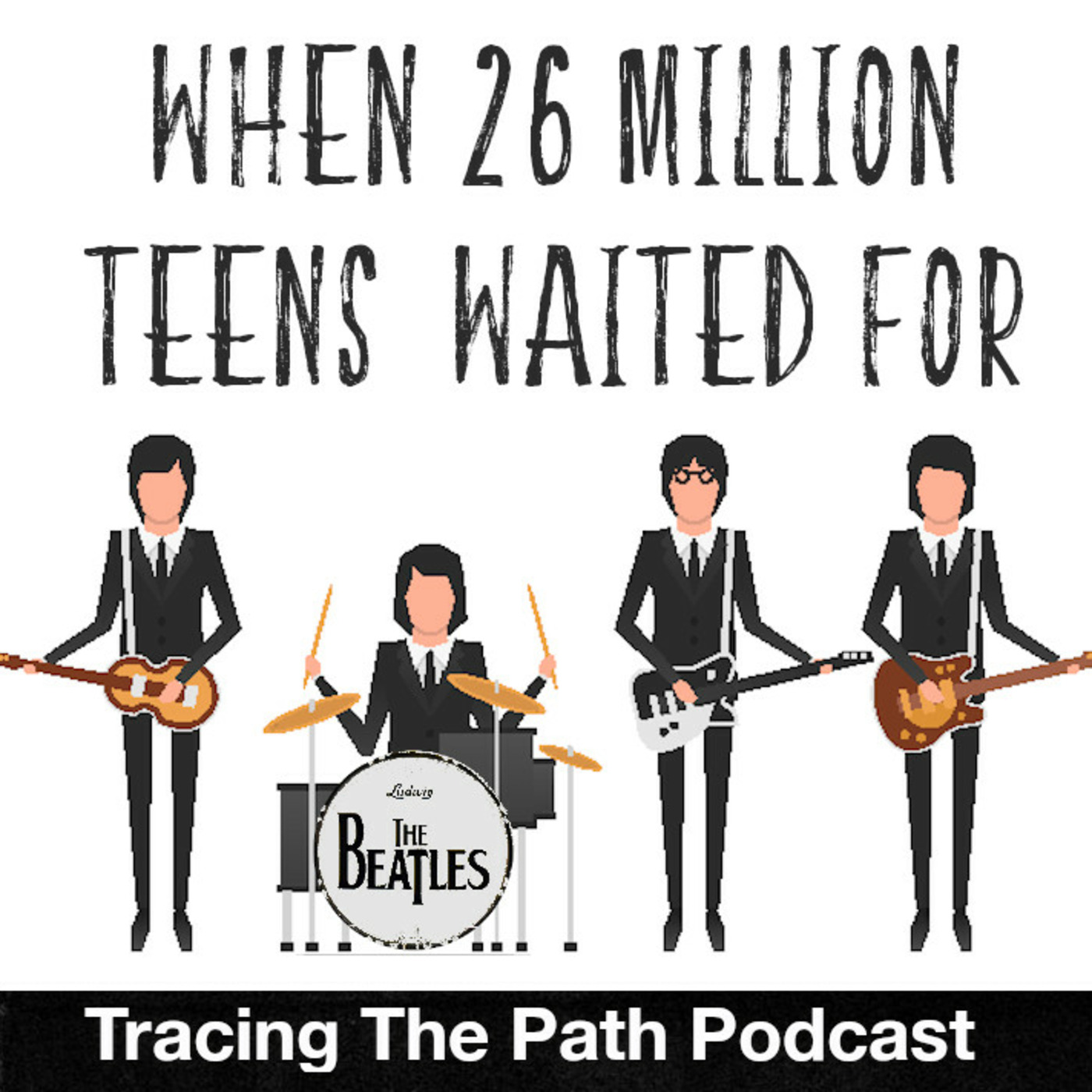 |
When 26 Million Teens Waited for the Beatles The phenomenon that occurred when the Beatles were live on the Ed Sullivan show could have been predicted. . . |
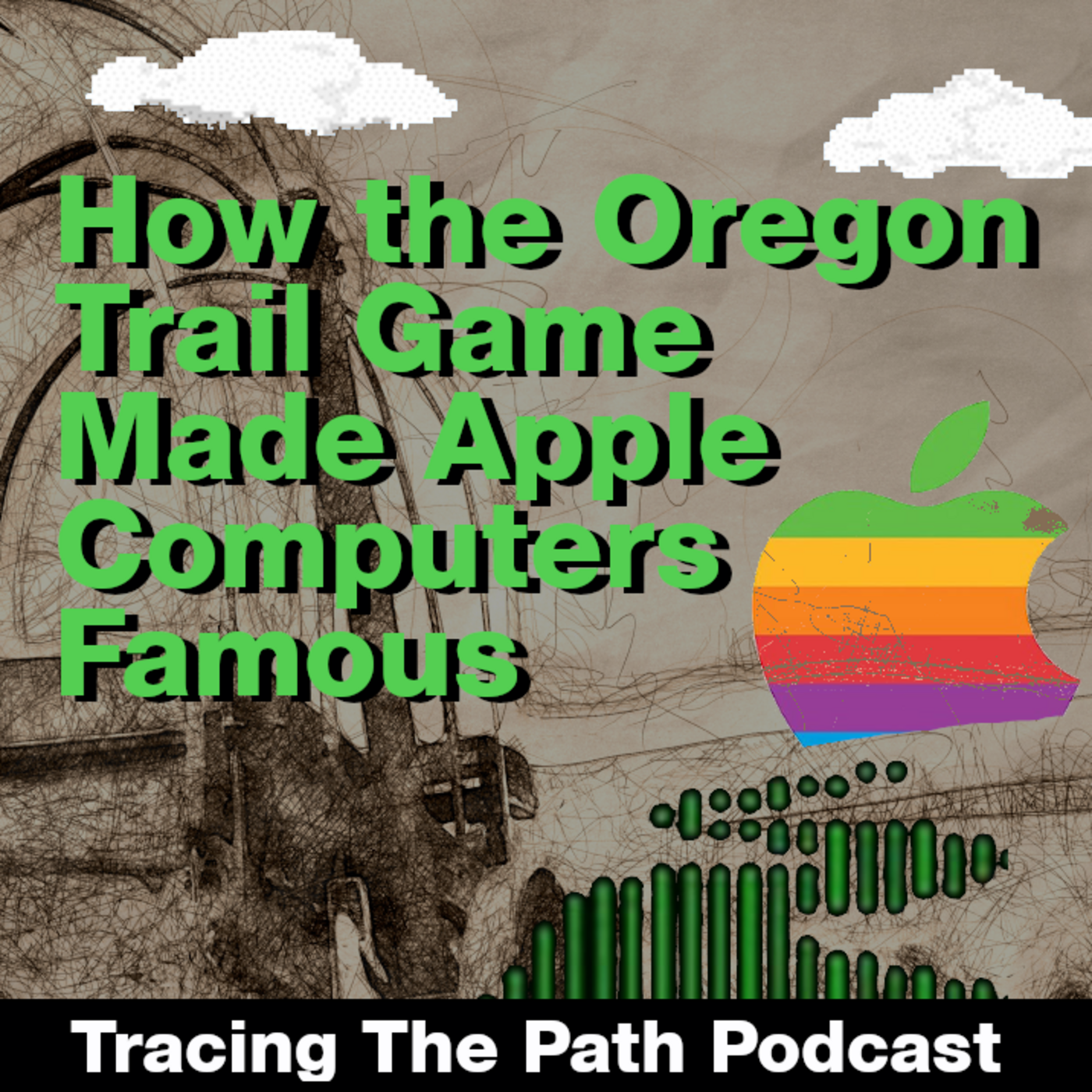 |
How the Oregon Trail Game Made Apple Famous Was it the Apple IIc that made Oregon Trail famous? Or the other way around? |
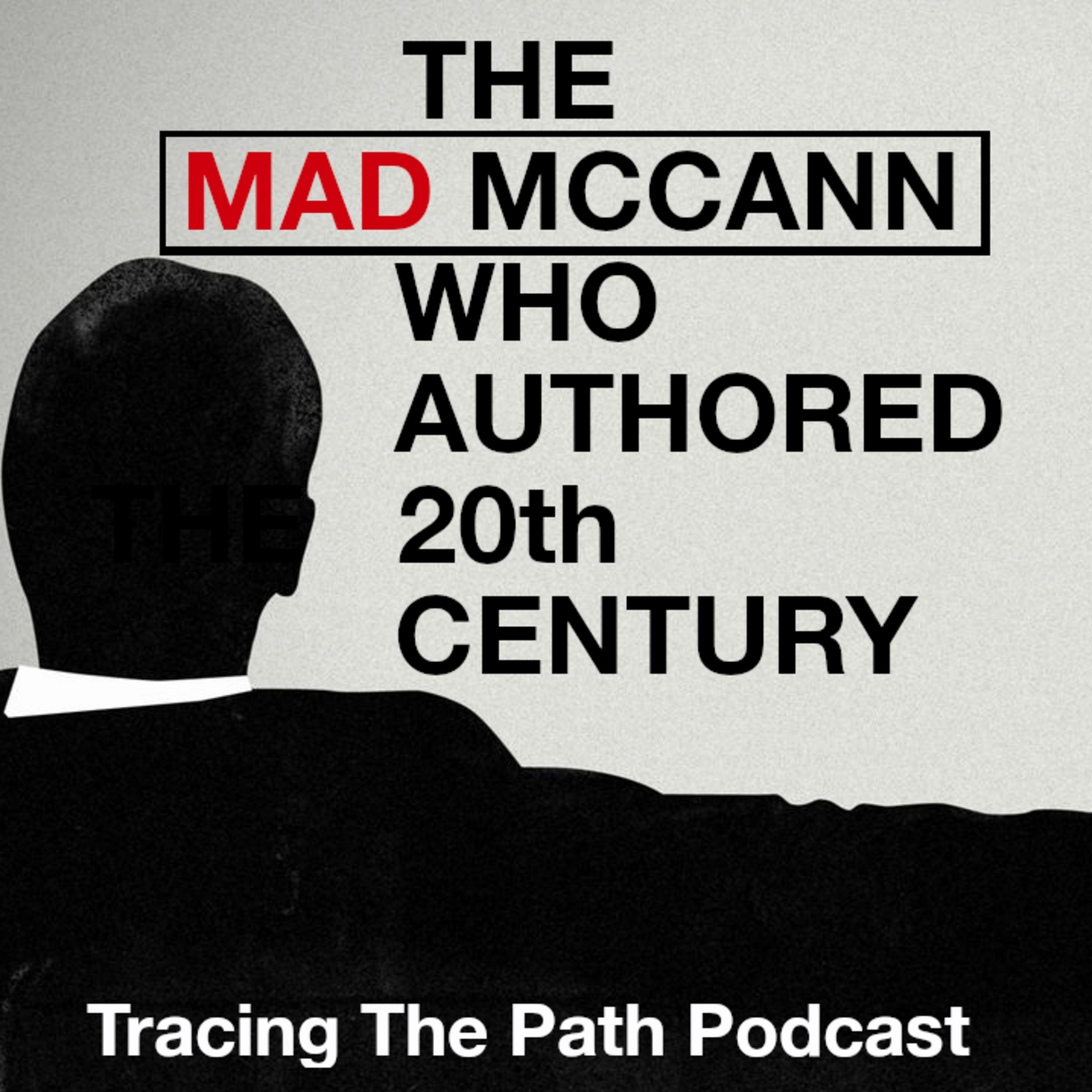 |
The History and Impact of McCann Erickson You’ll be amazed at how many things in our world come back to McCann. |
SEE THE BIBLIOGRAPHY
SUBSCRIBE AND LISTEN (FOR FREE!)
RATINGS & REVIEWS
If you enjoy this podcast, please give it a rating and review.Positive ratings and reviews help bring Tracing The Path to the attention of other history lovers who may not be aware of our show.



